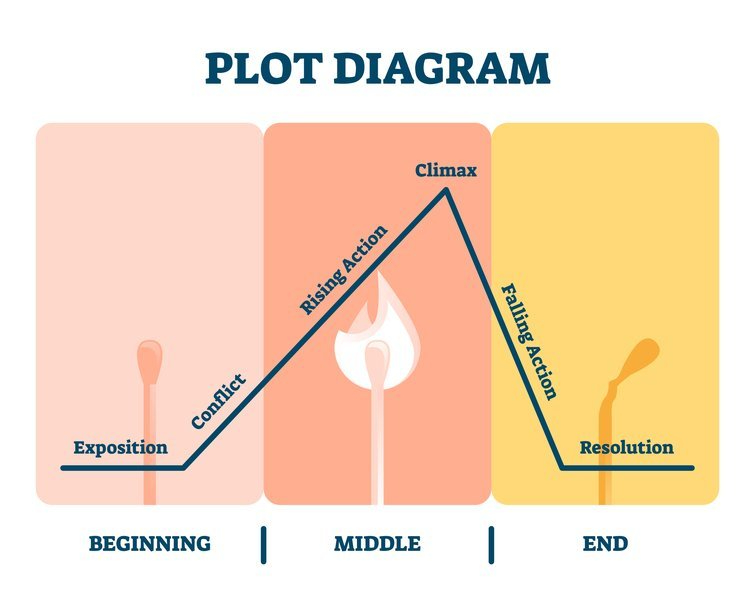Week 2:
Drama typically has intense conflicts. It emphasizes the plot and calls for every character and scene to enhance the narrative. Dramas often have a structured plot that includes emotionally charged individuals in either realistic or exaggerated situations.
The plot stands for the framework in screenwriting and filmmaking, whereas the story represents the content.
Freytag's Five-Part Pyramid provides a way to analyze and understand the structure of dramatic storytelling by breaking it down into five distinct parts: exposition, rising action, climax, falling action, and resolution.
Exposition: This is the introduction to the story. It sets the scene, introduces the characters, and establishes the setting and time. The exposition is important because it provides context.
Rising Action: This is where the plot begins to develop. Tension and suspense are generated by the conflicts and difficulties the protagonist confronts.
Climax: The story's turning point is the climax. The protagonist's confrontation with the story's primary conflict is when the action is at its most intense and dramatic.
Falling Action: The falling action depicts what happens after the story's peak. Once the story's unfinished business is resolved, the suspense and tension start to lessen.
Resolution: This is the last section of the story when the conflict is settled and the plot is wrapping up. Once the conflict is over, the characters' futures are revealed.
Strong themes and conflicts that keep the viewer interested long after the movie ends are essential for effective filmmaking. To make the movie more interesting, the focus must go on what's going on beneath the surface. It's not enough to have a compelling plot and well-rounded characters; you also need to present them with a philosophy or belief system that is called into question. Conflict can result from internal conflicts or outside barriers that stand in the way of characters achieving their goals. These tensions provide the plot the chance to take unexpected turns and keep the viewer interested in the story. Without conflict, there's little possibility of anything dramatic happening.
Sources:
Aldredge, Jourdan. “Understanding and Implementing Plot Structure for Films and Screenplays.” The Beat: A Blog by PremiumBeat, 29 Oct. 2020, https://www.premiumbeat.com/blog/plot-structure-for-films-and-screenplays/.
MasterClass. How to Identify Movie Genres: Beginner's Guide to 13 Film Genres - 2023. 10 Aug. 2022, https://www.masterclass.com/articles/how-to-identify-film-genres.
Velicheti, Pratyush. “Drama Films and Its Writing Challenges. Elements of the Genre - Drama.” Uniting Artists, 8 July 2020, https://unitingartists.org/drama-movie-genre/.


No comments:
Post a Comment